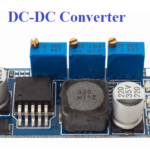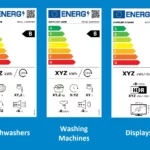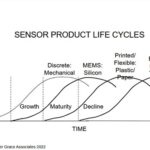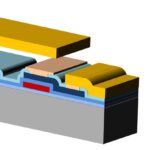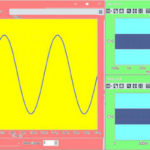According to the proverb, “seeing is believing,” but hearing something before you can see it can be very important, too. The earliest humans heard and recognized the sounds of predators long before they could see them. If they could see them — it was probably too late to take evasive action.
While sound has always played an important role in human activity, today’s technologies have extended the importance of sound. Accurate sensing and detection of audio information enables many modern tools that provide increased security, specific identification, and critical diagnostics. In addition to hearing and recognizing animal sounds, there is an entire field called audio forensics based on audio recordings that use microphones, including those based on microelectronic systems (MEMS) technology, other electronics, and software.
MEMS microphones are an integral part of consumer products such as mobile phones, wearables, and wireless headsets. These applications require ongoing miniaturization and low-power operation. Other trends play into the increased use of audio forensics including microphone design properties such as signal to noise ratio (SNR) and acoustic overload point (AOP). Commonly defined as the sound pressure level at which the total harmonic distortion (THD) exceeds 10%, a high AOP can help speech recognition systems in loud environments.
According to Rob Condorelli, Infineon Americas’ Director of Marketing for SiMic, “More and more applications are now requiring water-resistant MEMS microphones with high SNR and AOP to enable on-the-go, high-quality voice call.” Condorelli also said, “MEMS microphones with tight specifications and bi-directional interface will help designers to reduce system complexity.”
Audio forensics, the acquisition, analysis, and evaluation of sound recordings, can provide evidence for a criminal investigation by law enforcement or for a civil incident such as slander or fraud. To be useful and accepted in either instance, key aspects of audio forensics include establishing the authenticity of audio evidence, performing enhancement of audio recordings to improve speech intelligibility and the audibility of low-level sounds, and interpreting and documenting audio evidence. This can involve identifying talkers, transcribing dialog, and reconstructing crime or accident scenes and event timelines.
To ensure quality and consistency within the forensic community, the Scientific Working Group on Digital Evidence (SWGDE) brings together organizations actively engaged in the field of digital and multimedia evidence. Of its six committees, the Audio Committee and the Forensic Committee are specifically applicable to audio forensics.
Technology comes into play after performing critical listening by an expert or experts. Then the forensic expert uses electronic measurements to examine the audio evidence. This includes noting the prominent frequencies in the voices or other sound source and the noise floor. Spectrograms, frequency analysis windows, and level meters are used for observing and collecting the information including the levels of the recording and the different frequencies. In this process, the expert notes the frequency range of the overall recording, the voices or conversation, and the noise floor or extraneous sounds in the recording.
One sign of audio tampering is indicated by the frequency range of a voice suddenly becoming larger or smaller or shifting in frequency range. Edited data is also indicated by sudden, unexplained changes in the noise floor level or the sudden presence of another background noise. The presence of two noise floors can often be measured and seen in a spectrogram and a frequency analysis panel. Post-processing is certainly simplified and more credible when high accuracy and high performance is provided in the original audio signals.
References
What is Audio Forensics? Recordings used in Litigation (audioforensicexpert.com)
AN547 – Why you need high performance, ultra-high SNR MEMS microphones
SWGDE

